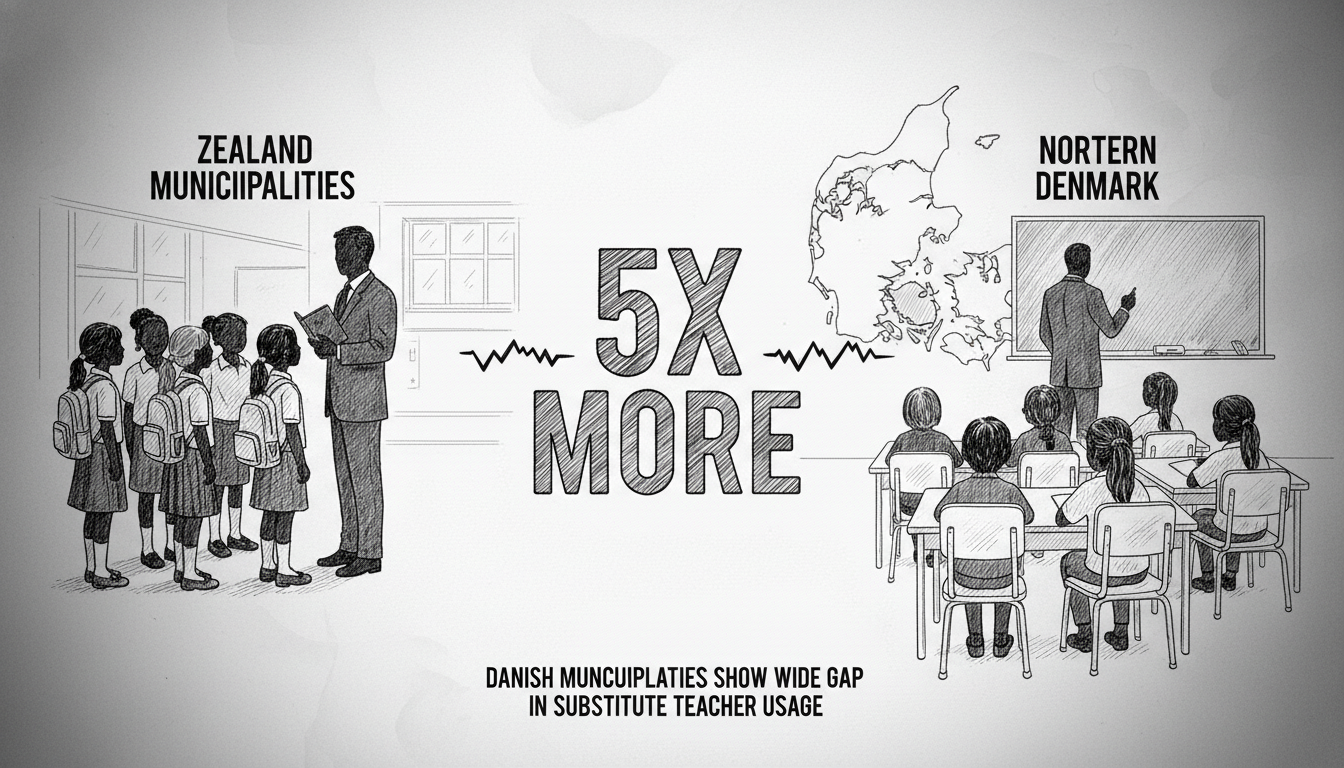Children in Egedal, Allerød, and Rudersdal municipalities encounter five times more substitute teachers than students in Aalborg schools. This striking disparity emerges from new data analysis of Denmark's public education system.
The conservative think tank CEPOS compiled these statistics using official government data. Their findings reveal dramatic differences in substitute teacher reliance across Danish municipalities. Students in some Zealand communities experience substantially more classroom disruptions than their northern counterparts.
This situation raises important questions about educational consistency. Why do some municipalities depend so heavily on temporary teaching staff? What impact does frequent teacher turnover have on student learning outcomes?
Denmark's folkeskole system serves as the backbone of public education. All children aged 6 to 16 attend these municipal schools. Local governments manage teacher hiring and classroom resources independently. This decentralized approach creates natural variations between regions.
Substitute teacher shortages represent a growing challenge across Scandinavia. Many Nordic countries face similar educational staffing issues. Qualified teachers increasingly seek permanent positions with better job security. Temporary teaching roles often go unfilled for extended periods.
The CEPOS analysis highlights specific geographic patterns. Zealand municipalities consistently show higher substitute usage rates. Northern Jutland communities like Aalborg maintain more stable teaching staffs. This north-south divide suggests deeper structural differences in educational management.
Parents and education advocates express concern about these findings. Consistent teacher-student relationships form the foundation of effective learning. Frequent substitutes can disrupt classroom continuity and student progress. Children benefit from stable, familiar teaching environments.
Municipal education budgets also play a crucial role. Wealthier communities often attract more permanent teaching staff. They can offer competitive salaries and better working conditions. Less affluent areas may struggle to fill permanent positions, increasing their reliance on substitutes.
The Danish teachers' union has repeatedly highlighted working condition issues. Many educators report excessive workloads and administrative burdens. These factors contribute to higher turnover rates in some municipalities. Addressing these underlying causes could reduce substitute dependence.
International readers should understand Denmark's unique educational context. The folkeskole system emphasizes inclusive education and student well-being. Danish schools traditionally maintain small class sizes and focus on holistic development. These current staffing challenges threaten these established educational values.
Looking forward, municipal governments face pressure to address these disparities. Education quality should not depend on geographic location. Students deserve equal learning opportunities regardless of their postal code. Sustainable solutions will require coordinated efforts between local and national authorities.

